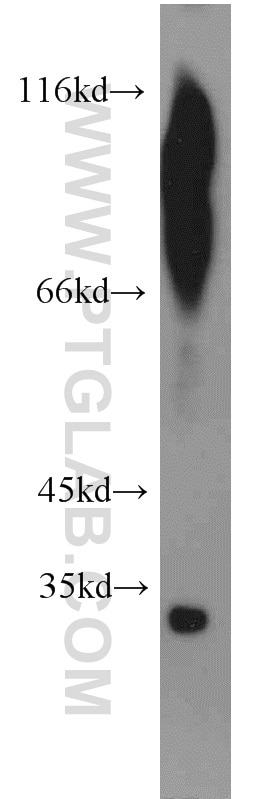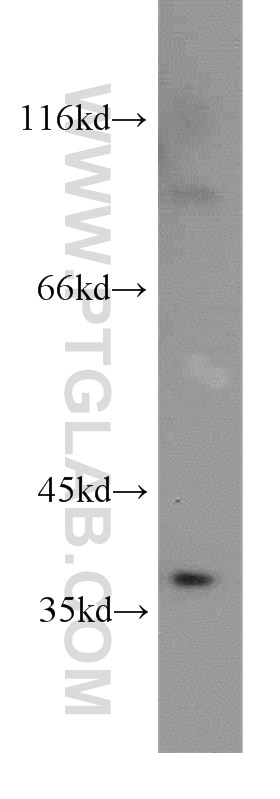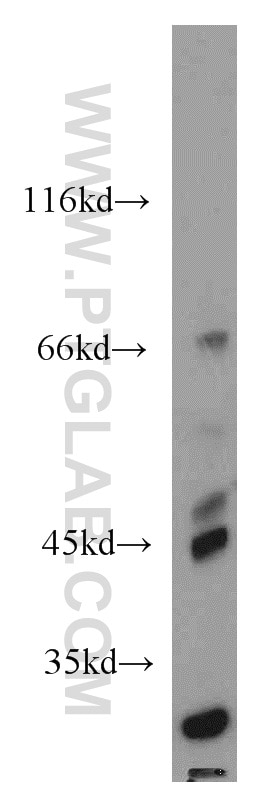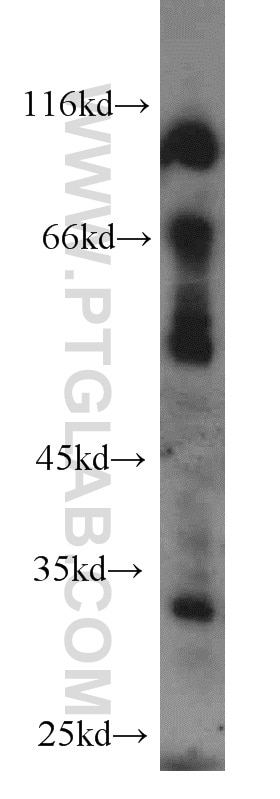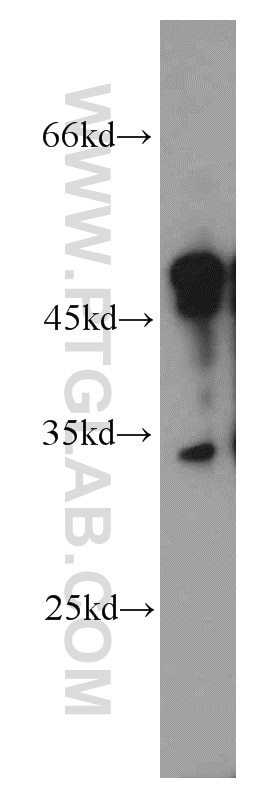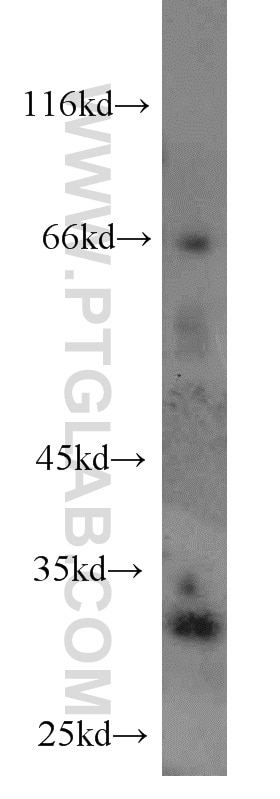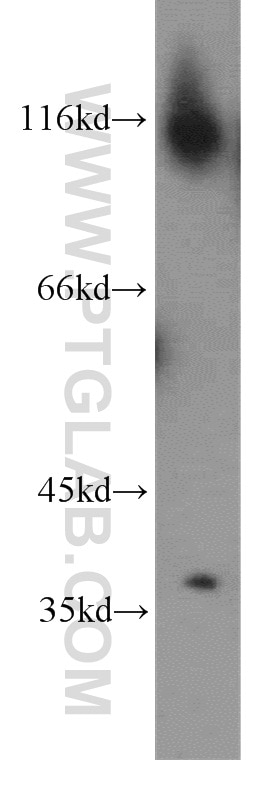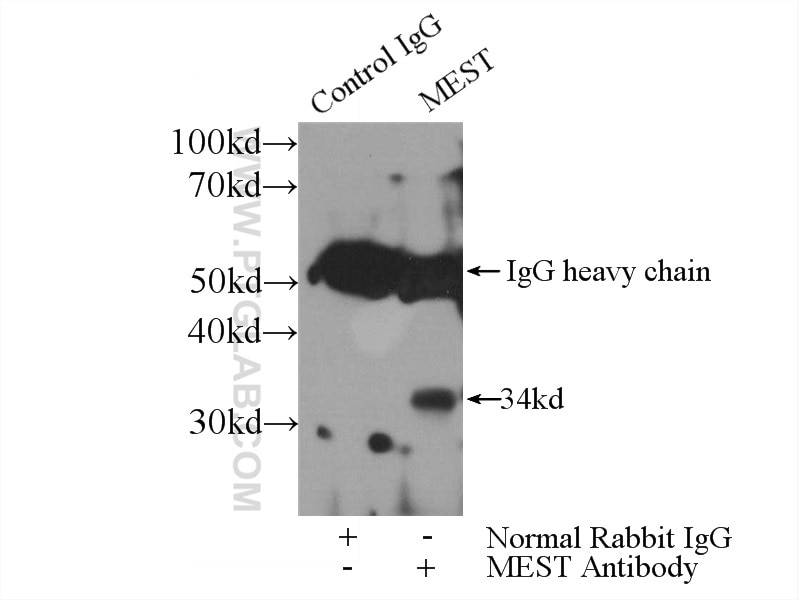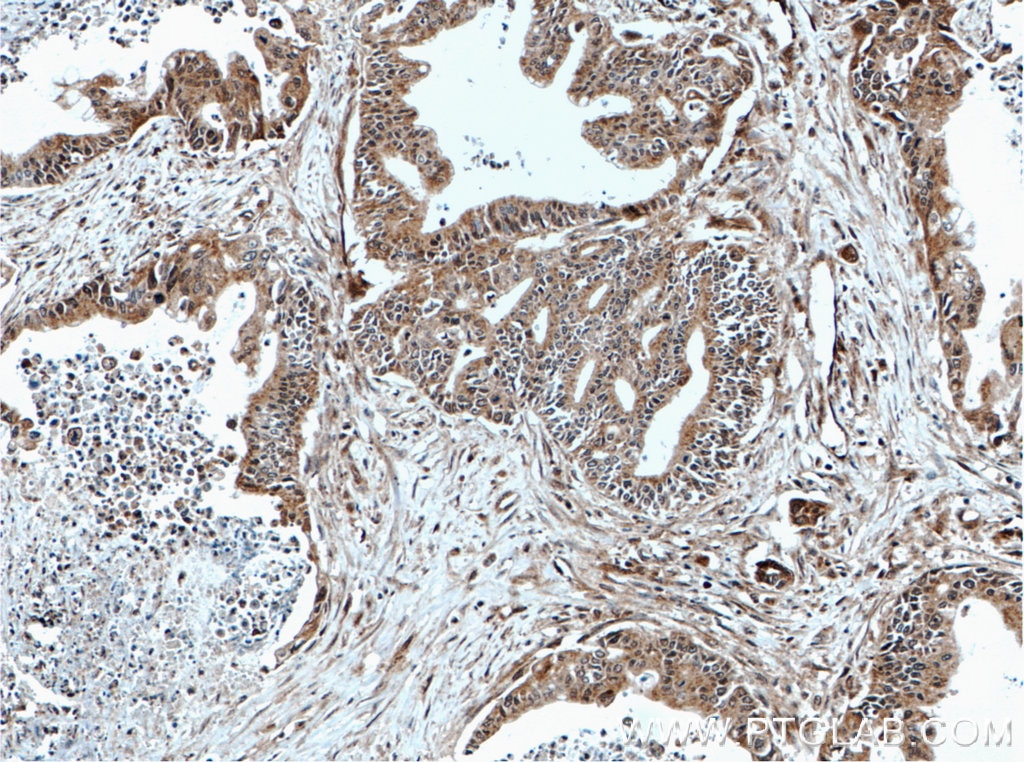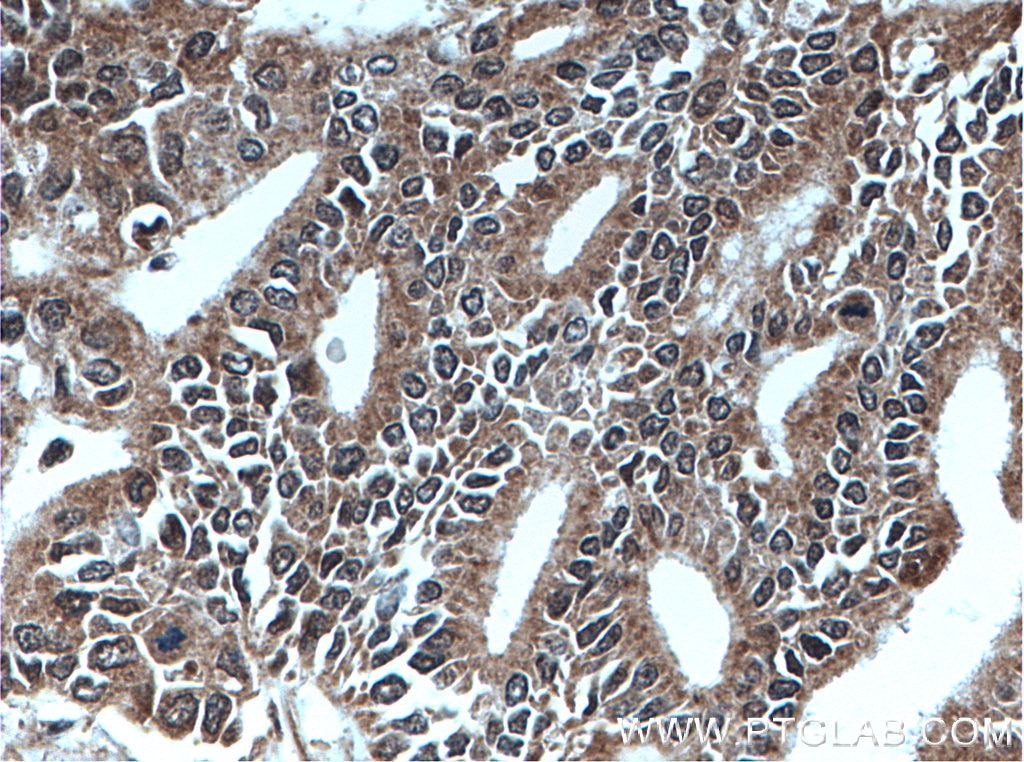- Phare
- Validé par KD/KO
Anticorps Polyclonal de lapin anti-MEST
MEST Polyclonal Antibody for WB, IP, IHC, ELISA
Hôte / Isotype
Lapin / IgG
Réactivité testée
Humain, rat, souris
Applications
WB, IHC, IF, IP, ELISA
Conjugaison
Non conjugué
N° de cat : 11118-1-AP
Synonymes
Galerie de données de validation
Applications testées
| Résultats positifs en WB | tissu testiculaire humain, cellules PC-3, tissu testiculaire de souris |
| Résultats positifs en IP | cellules PC-3 |
| Résultats positifs en IHC | tissu de cancer du pancréas humain, il est suggéré de démasquer l'antigène avec un tampon de TE buffer pH 9.0; (*) À défaut, 'le démasquage de l'antigène peut être 'effectué avec un tampon citrate pH 6,0. |
Dilution recommandée
| Application | Dilution |
|---|---|
| Western Blot (WB) | WB : 1:500-1:1000 |
| Immunoprécipitation (IP) | IP : 0.5-4.0 ug for 1.0-3.0 mg of total protein lysate |
| Immunohistochimie (IHC) | IHC : 1:50-1:500 |
| It is recommended that this reagent should be titrated in each testing system to obtain optimal results. | |
| Sample-dependent, check data in validation data gallery | |
Applications publiées
| KD/KO | See 2 publications below |
| WB | See 10 publications below |
| IHC | See 3 publications below |
| IF | See 3 publications below |
Informations sur le produit
11118-1-AP cible MEST dans les applications de WB, IHC, IF, IP, ELISA et montre une réactivité avec des échantillons Humain, rat, souris
| Réactivité | Humain, rat, souris |
| Réactivité citée | Humain, souris |
| Hôte / Isotype | Lapin / IgG |
| Clonalité | Polyclonal |
| Type | Anticorps |
| Immunogène | MEST Protéine recombinante Ag1617 |
| Nom complet | mesoderm specific transcript homolog (mouse) |
| Masse moléculaire calculée | 38 kDa |
| Poids moléculaire observé | 34 kDa |
| Numéro d’acquisition GenBank | BC011908 |
| Symbole du gène | MEST |
| Identification du gène (NCBI) | 4232 |
| Conjugaison | Non conjugué |
| Forme | Liquide |
| Méthode de purification | Purification par affinité contre l'antigène |
| Tampon de stockage | PBS with 0.02% sodium azide and 50% glycerol |
| Conditions de stockage | Stocker à -20°C. Stable pendant un an après l'expédition. L'aliquotage n'est pas nécessaire pour le stockage à -20oC Les 20ul contiennent 0,1% de BSA. |
Informations générales
MEST(Mesoderm-specific transcript homolog protein) is also named as PEG1 and belongs to the AB hydrolase superfamily. The gene is a imprinting gene, which is associated with growth of mesodermal origin cells(PMID:20339302) and plays important roles in embryo development(PMID:21375506). It is also a novel regulator of Wnt/CTNNB signalling during adipogenic differentiation(PMID:21375506). It has 3 isoforms produced by alternative splicing and the full length protein has a glycosylation site.
Protocole
| Product Specific Protocols | |
|---|---|
| WB protocol for MEST antibody 11118-1-AP | Download protocol |
| IHC protocol for MEST antibody 11118-1-AP | Download protocol |
| IP protocol for MEST antibody 11118-1-AP | Download protocol |
| Standard Protocols | |
|---|---|
| Click here to view our Standard Protocols |
Publications
| Species | Application | Title |
|---|---|---|
Cell Death Dis α1,3-fucosylation of MEST promotes invasion potential of cytotrophoblast cells by activating translation initiation | ||
Nucleic Acids Res Tissue-specific alternative polyadenylation at the imprinted gene Mest regulates allelic usage at Copg2. | ||
Gynecol Oncol Increased co-expression of MEST and BRCA1 is associated with worse prognosis and immune infiltration in ovarian cancer. | ||
Cancer Lett Novel target genes responsive to the anti-growth activity of triptolide in endometrial and ovarian cancer cells. | ||
Placenta DNA methylation-associated repression of MEST/PEG1 expression contributes to the invasion of extravillous trophoblast cells.
| ||
Placenta Maternal obesity and gestational weight gain are modestly associated with umbilical cord DNA methylation. |
